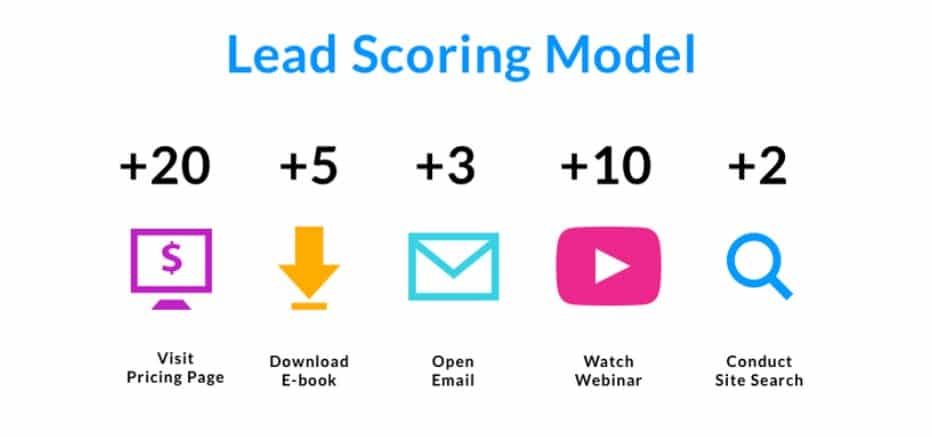Lead management is a crucial element of any successful sales and marketing plan. It involves analyzing, nurturing, and managing the process of generating and capturing leads and turning them into paying customers.
Experienced businesses recognize the value of essential lead management. Establishing your lead management strategy to build your own business makes sense. But where exactly do you start?
We have ten steps to help create and implement a successful lead management strategy—by following these steps, you can maximize your lead generation and reap the rewards of planning.
1. Define your lead management objectives
Clarify your lead management objectives, such as improving visibility into the lead funnel, identifying and prioritizing leads, and converting more leads into customers. Leads are used to generate customers and identify cross-selling and upselling opportunities in the customer journey, but they also may have more pointed purposes. Are you looking for long-term customers, or is there a short-term gain that needs to be prioritized?
Four lead objectives include generating revenue, driving interest, gathering information, and engaging in customer service. Your strategy may vary heavily based on the objective. These are important goals, but your lead generation strategy will need to shift based on the overarching goal—though some crossover exists between all four. To achieve quality leads—something 79 percent of marketers designate as their top goal—you need to know where to aim.
2. Create unique lead profiles
In a successful lead management strategy, knowing how often you need to search for leads is crucial. The frequency at which a marketing team should conduct lead searches will depend on the specific needs and goals of the business. When determining the frequency of lead searches, some factors include the target market’s size, the competition level, and the resources available to the marketing team.
Generally, it is advisable to conduct lead searches regularly, monthly or quarterly, to ensure that the marketing team has a steady stream of leads. However, the exact frequency will depend on the specific needs and goals of the business, and it may be necessary to adjust the frequency as these needs and goals change over time.
You should utilize customer data to create accurate, detailed profiles for capturing and analyzing lead information. Lead profiles include detailed consumer data such as demographic information, lifestyle choices, and purchasing habits. Gathering this data can grant your team a greater understanding of your target audience.
Another benefit is that these quality lead profiles can help create target campaigns based on data from such research. Unique lead profiles can result in targeted, efficient, and results-driven campaigns.
3. Develop a lead nurturing strategy
This step can be particularly vital if your lead strategy has a human element. Establish a plan to keep leads warm and maintain relationships with prospects by sending emails, setting up nurture tracks, and other outbound activities. Conducting periodic interviews or surveys with people in your target market is an excellent way to nurture leads.

Source: GetGist
Keeping and maintaining contact with representatives of potential leads is vital. Over half of marketers find getting targeted prospects to engage is their most significant hurdle in gaining information. Nurturing connections to those leads helps increase the odds of marketing success.
4. Implement lead segmentation
Start by using lead segmentation to organize leads and place them in specific buckets based on their interest, behavior, and demographic. Utilizing these segments helps your campaigns reach the right people. It is better to have more segmentation than fewer, especially as you may discover more targeted markets.Further, setting up tracking of statistics and performance in lead segmentation is an important step. Using quality software to manage segmentation and automating campaigns can increase the qualified leads generated.
5. Utilize lead scoring
Analyze lead data to track and score leads according to their value and conversion probability. Market scoring is a method marketers use to rank and prioritize leads based on their potential value to the business. You can also use B2B lead scoring to assign scores to leads based on specific criteria, such as demographics, behavior, and interactions with the brand, marketers can effectively prioritize their efforts and target their outreach to the most promising leads.

Source: Proof
To effectively utilize lead scoring, a marketer should establish clear criteria for scoring leads and track and measure the relevant data for each lead. You can then use this information to create targeted campaigns and personalized communication, increasing the chances of converting leads into customers. Several B2B businesses struggle with lead generation, often from inefficient lead scoring.
6. Combine lead source tracking
Categorize and monitor leads based on their source—such as organic search, paid campaigns, social media, etc. By understanding the different channels that generate leads for your business, you can better understand the effectiveness of your marketing efforts and allocate your resources accordingly. For example, if you are seeing a high volume of leads from organic search, it may be worth investing more in search engine optimization (SEO) efforts to drive even more traffic to your website.
On the other hand, if you are seeing a lot of leads coming from paid campaigns, it may be worth analyzing the data to see which campaigns are performing the best and allocating more budget to those efforts. By tracking and analyzing the source of your leads, you can gain valuable insights into the effectiveness of your marketing efforts and make informed decisions about how to allocate your resources.
7. Automate lead workflows
Set automated rules to move leads through your sales cycle, including assigning leads to reps, sending out notifications, and managing data. Automated rules can be valuable for driving leads through your sales cycle. You can streamline tasks such as assigning leads to reps, sending out notifications, and managing data by setting up rules in your lead management system.
For example, you can set up a rule that automatically assigns leads to reps based on geographic location or industry. Another rule is to notify an agent when a lead has shown interest in a particular product or service. Striking when interest is shown is especially important, as over half of potential leads are not ready to buy. Automated rules can help you manage your sales cycle more efficiently, saving your team time and resources while improving the customer experience.
8. Analyze lead performance
Track lead performance over time to identify trends and measure the success of your lead management strategy. Tracking lead performance over time is an integral part of measuring the success of your lead management strategy. By analyzing conversion rates, customer lifetime value, and churn, you can identify trends and make informed decisions about optimizing your process.
Performance analysis can help you improve the efficiency and effectiveness of your lead management efforts, leading to better results for your business.
9. Train your sales reps
Make sure your sales reps understand lead management, how to use the system, follow up on leads, and manage and close deals. Ensuring that your sales reps understand lead management is essential for the success of your business, including understanding how to use your lead management system, following up on leads, and managing and closing deals. Providing your reps with training and ongoing support can help them effectively utilize the system and maximize their productivity.
Establishing clear guidelines and protocols for managing leads and following up with prospects is also essential, as this can help ensure a consistent and practical approach to sales. By supporting your sales reps and providing them with the tools and resources they need to succeed, you can improve the performance of your sales team and drive better results for your business. For example, you can provide them with second phone number apps so that they can easily separate personal and business calls, as well as track and organize their call logs.
Final thoughts
Finally, connecting your lead management software with other sales and marketing technologies can increase engagement and efficiency. By integrating these systems, you can streamline the tracking and managing of leads and gain valuable insights into their behavior and interests.
Integration can help you create more targeted and personalized communication, increasing the chances of converting leads into loyal customers. Additionally, integrating your lead management system with other technologies can allow you to automate specific tasks, such as sending email campaigns or updating customer records, improving the efficiency and effectiveness of your marketing efforts and leading to better results for your business.
Lead management is an essential aspect of marketing and can significantly impact a business’s success. It involves various activities, including generating leads, identifying and qualifying potential customers, and nurturing leads through the sales process until they are ready to purchase.
A good lead management strategy can help a business better understand its target audience, build relationships with potential customers, and increase conversions. It’s essential to be consistent and persistent in your efforts and to continuously monitor and optimize your lead management strategy to ensure it is effective.








